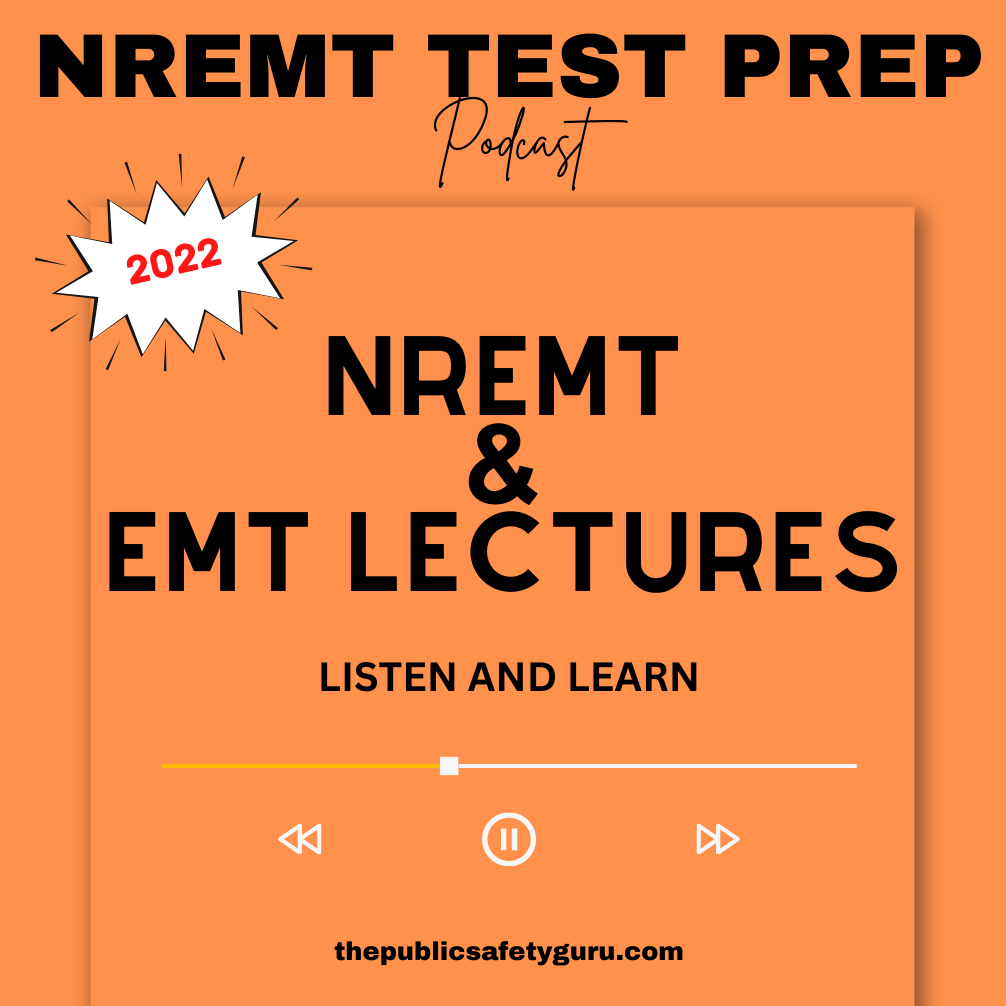
Episodes
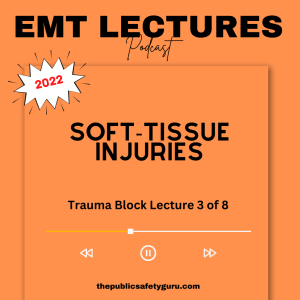
Thursday Jan 19, 2023
Thursday Jan 19, 2023
Exclusive content and support:
Students should have an understanding of types of open and closed soft-tissue injuries; how to care for soft-tissue injuries, including the use of dressings and bandages; and the assessment and care of different types of burns, including thermal, chemical, and electrical burns.
Knowledge Domains
The EMT should be able to describe the anatomy of the skin; include the layers of the skin as well as the the functions of the skin. The EMT should be able to name the three types of soft-tissue injuries as well as describe types of closed soft-tissue injuries and open soft-tissue injuries. The EMT should be able to explain the assessment of closed and open injuries as well as the associated medical care for these injuries. The EMT should also be aware of airway management as it relates to these injuries. The EMT should have an understanding of the medical care for an open wound to the abdomen, an impaled object and injuries to the neck. The EMT should know the steps of the emergency treatment of small animal bites, human bites, and rabies.
The EMT should be able to explain how the seriousness of a burn is related to its depth and extent and be able to define superficial, partial-thickness, and full-thickness burns, including the characteristics of each burn. The EMT should be able to explain the primary assessment of a burn patient and the emergency medical care for burn injuries. The EMT student should be able to describe the emergency management of chemical, electrical, thermal, inhalation, and radiation burns as well.
Last the EMT should know the functions of sterile dressings and bandages.
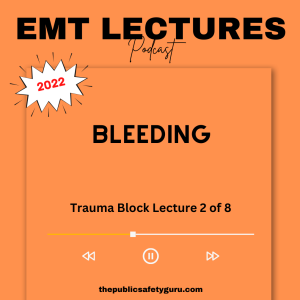
Thursday Jan 19, 2023
Thursday Jan 19, 2023
Exclusive content and support:
The EMT student should have an understanding of the structure and function of the circulatory system, the significance and characteristics of bleeding, the importance of personal protective equipment when treating a bleeding patient, the characteristics of external and internal bleeding, how to conduct a patient assessment, and methodologies for controlling bleeding.
Knowledge Domains:
EMT's should be able to describe the general structure of the circulatory system and the function of its different parts, including the heart, arteries, veins, and capillaries. Explain the significance of bleeding caused by blunt force trauma, including the importance of perfusion and discuss hypovolemic shock as a result of bleeding, including the signs of shock. Students should know the importance of following standard precautions when treating a patient with external bleeding. and describe the characteristics of external bleeding, including the identification of the following types of bleeding: arterial, venous, and capillary. Additionally students should be able to explain how to determine the nature of the illness (NOI) for internal bleeding, including identifying possible traumatic and nontraumatic sources.
Students should know the signs and symptoms of internal bleeding and discuss internal bleeding in terms of the different mechanisms of injury (MOI) and their associated internal bleeding sources. The EMT student should be able to explain how to conduct a primary assessment, including identification of life threats beyond bleeding, ensuring a patent airway, and making a transport decision. Last, students should be able to explain the emergency medical care of the patient with external and internal bleeding.
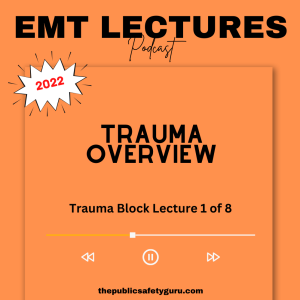
Thursday Jan 19, 2023
Thursday Jan 19, 2023
Exclusive content and support:
The EMT, following this lecture should have an understanding of the basic concepts of energy and its effect on the human body; the general injury patterns associated with different types of impacts, falls, and penetrating trauma; and the basic application of laws of physics on the assessment of trauma patients. Students will also understand some common injury patterns to major body systems.
Knowledge Domains:
The EMT student should be able to define the terms: mechanism of injury (MOI), blunt trauma, and penetrating trauma. You should be able to explain the relationship of the MOI to potential energy, kinetic energy, and work. Describe the five types of motor vehicle crashes, the injury patterns associated with each one, and how each relates to the index of suspicion of life-threatening injuries. Discuss the three specific factors to consider during assessment of a patient who has been injured in a fall. Discuss the effects of high-, medium-, and low-velocity penetrating trauma on the body and how an understanding of each type helps EMTs form an index of suspicion about unseen life-threatening injuries. Discuss primary, secondary, tertiary, and miscellaneous blast injuries and the anticipated damage each one will cause to the body. Describe multisystem trauma and the special considerations that are required for patients who fit this category. Explain the major components of trauma patient assessment; include considerations related to whether the method of injury was significant or nonsignificant. Discuss the special assessment considerations related to a trauma patient who has injuries in each of the following areas: head, neck and throat, chest, and abdomen. Explain a general overview of multisystem trauma patient management and patient management in relation to scene time and transport selection. List the Association of Air Medical Services criteria for the appropriate use of emergency air medical services as well as talk about the American College of Surgeons’ Committee on Trauma classification of trauma centers. Last, explain, the American College of Surgeon’s Committee on Trauma and the Centers for Disease Control and Prevention field triage decision scheme as it relates to making an appropriate destination selection for a trauma patient.penetrating trauma.
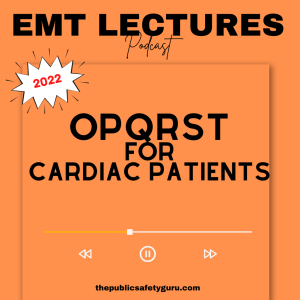
Tuesday Nov 01, 2022
NREMT EMT Lecture - OPQRST for Cardiovascular Emergencies - BONUS - Season 2
Tuesday Nov 01, 2022
Tuesday Nov 01, 2022
Exclusive content and support:
This is a bonus lecture for the Cardiovascular Emergency lecture. We discuss the use of OPQRST for the chest pain patient.
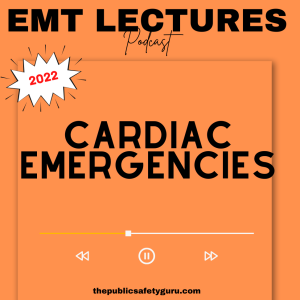
Sunday Oct 30, 2022
Sunday Oct 30, 2022
Exclusive content and support:
After this lecture the student should understand the significance and characteristics of the anatomy and physiology of the cardiovascular system; cardiovascular emergencies; the pathophysiology of respiration and perfusion; signs and symptoms of the most common cardiac conditions; the indications, contraindications, and use of automated external defibrillators (AEDs); and the general care of a patient experiencing a cardiac emergency.
Knowledge Domains: Identify the basic anatomy and physiology of the cardiovascular system, the pathophysiology of the cardiovascular system as well as describe the anatomy, physiology, pathophysiology, assessment, and management of the following cardiac related emergencies: thromboembolism, angina pectoris, myocardial infarction, a hypertensive emergency and a aortic aneurysm/dissection.
Explain patient assessment procedures for cardiovascular problems and the relationship between airway management and the patient with cardiac compromise.
Give the indications and contraindications for the use of aspirin and nitroglycerin.
Recognize that many patients will have had cardiac surgery and may have implanted pacemakers or defibrillators.
Define cardiac arrest and understand the differences between the fully automated and the semiautomated defibrillator. Describe the different types of AEDs and the indications and contraindications for use of an automated external defibrillator (AED). The EMT should know the reasons for early defibrillation and explain the circumstances that may result in inappropriate shocks from an AED. Describe AED maintenance procedures, continuing education and review.
EMT should know and understand the the emergency medical care for the patient with cardiac arrest and describe the components of care following AED shocks.
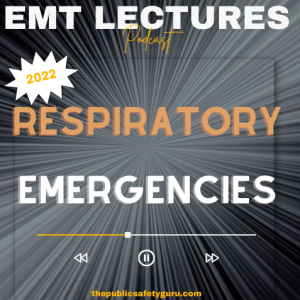
Sunday Oct 02, 2022
Sunday Oct 02, 2022
Exclusive content and support:
The EMT will understand the significance and characteristics of respiratory emergencies in infant, child, and adult populations. The EMT should be able to demonstrate a fundamental comprehension on the following topics: respiratory anatomy and physiology, pathophysiology, signs and symptoms of various respiratory etiologies (eg, asthma, COPD, pneumonia), and the assessment and management necessary to provide basic care in the prehospital setting.
Knowledge Domains
- List the structures and functions of the upper and lower airways, lungs, and accessory structures of the respiratory system.
- Explain the physiology of respiration; include the signs of normal breathing.
- Discuss the pathophysiology of respiration, including examples of the common signs and symptoms a patient with inadequate breathing may present with in an emergency situation.
- Explain the special patient assessment and care considerations that are required for geriatric and pediatric patient who are experiencing respiratory distress.
- Describe different respiratory conditions that cause dyspnea, including their causes, assessment findings and symptoms, complications, and specific prehospital management and transport decisions.
- List the characteristics of infectious diseases that are frequently associated with dyspnea.
- Discuss some pandemic considerations related to the spread of influenza type A and strategies EMTs should employ to protect themselves.
- Describe the assessment of a patient who is in respiratory distress and the relationship of the assessment findings to patient management and transport decisions.
- Describe the primary emergency medical care of a person who is in respiratory distress.
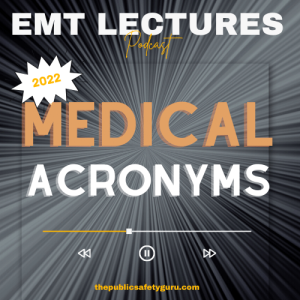
Saturday Oct 01, 2022
NREMT & EMT Lectures and Prep - Medical Acronyms - Season 2
Saturday Oct 01, 2022
Saturday Oct 01, 2022
Exclusive content and support:
Popular medical acronyms to be used during your patient assessments:
AEIOUTIPS
AVPU
DCAPBLSTICS
SAMPLE
HAM
DRGERM
OPQRST
SLUDGE
PERRL
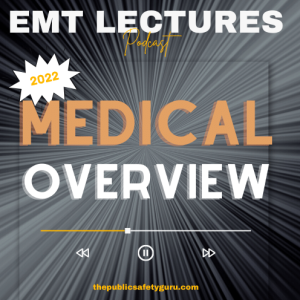
Saturday Oct 01, 2022
NREMT & EMT Lecture and Prep - Medical Overview Lecture 1 of 7 - Season 2
Saturday Oct 01, 2022
Saturday Oct 01, 2022
Exclusive content and support:
After this lecture, the EMT should understand the need for a proper patient assessment when responding to patients whose chief complaint is medical in nature. The EMT should be able to differentiate between medical and traumatic emergencies but realize a patient may be suffering from both as well as the following knowledge domains:
Common Medical Emergencies
Nature of Illness determination
The Medical Patient Assessment
Proper Patient Transport and Destination
Define Infectious and Communicable Diseases
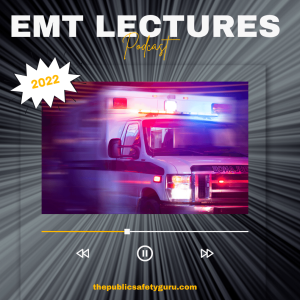
Thursday Sep 22, 2022
NREMT & EMT Lecture and Prep - Shock Lecture - Season 2
Thursday Sep 22, 2022
Thursday Sep 22, 2022
The EMT will learn about shock (hypoperfusion), perfusion, the signs and symptoms of shock, types of shock, causes of shock, and the specific treatment for the different shocks.
Pathophysiology of Shock
Causes of Shock
Types of Shock
Signs and Symptoms of Shock
Compensated versus Decompensated Shock
Assessment for Shock
Emergency care for Shock
Exclusive content and support:
https://anchor.fm/thepublicsafetyguru/subscribe
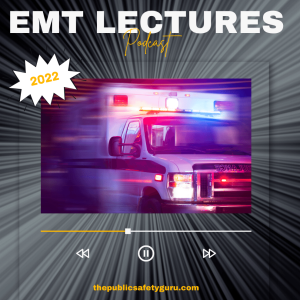
Wednesday Sep 21, 2022
NREMT - EMT Lectures and Prep - Patient Assessment - Season 2
Wednesday Sep 21, 2022
Wednesday Sep 21, 2022
In this lecture, students will learn about the patient assessment. Unlike other lectures, the patient assessment here will be broken up into five sub-lectures which are scene size-up, primary assessment, history taking, secondary assessment, and patient reassessment. Students will also learn how to use SAMPLE, PENMAN, AVPU, and OPQRST.
Exclusive content and support:
https://anchor.fm/thepublicsafetyguru/subscribe
Version: 20241125
